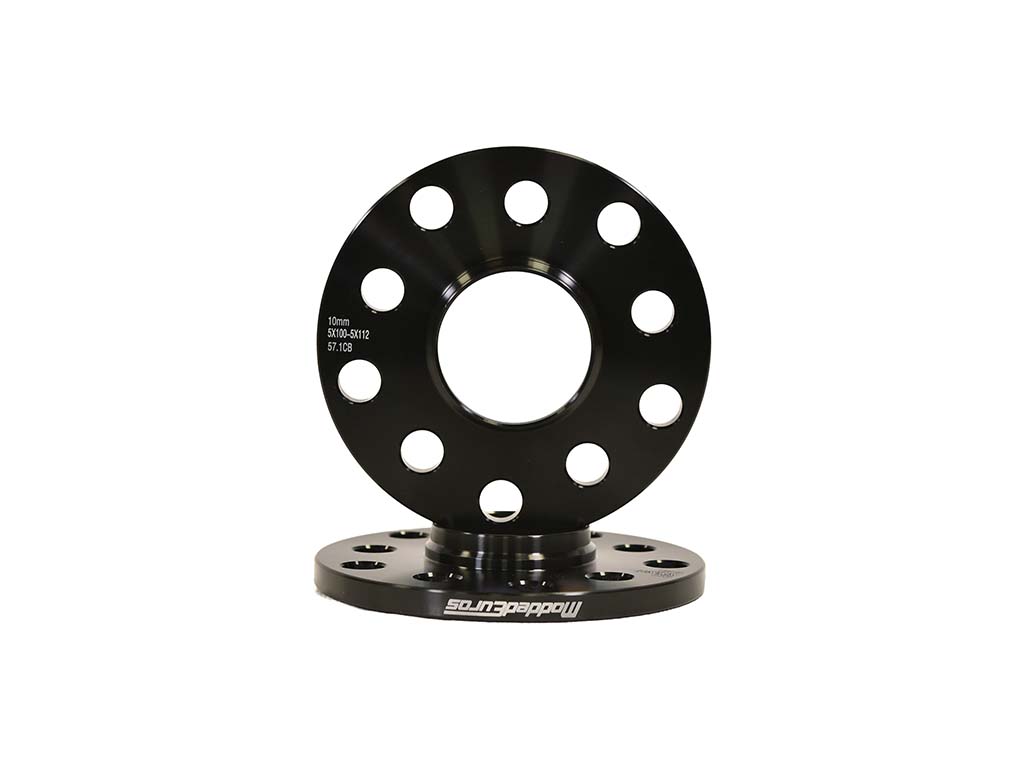Understanding Automotive Wheel Offset and the Role of Spacers
The automotive world is filled with details that can make all the difference in a vehicle’s performance, handling, and appearance. One such detail is wheel offset, which plays a crucial role in determining how a car behaves on the road. This blog post will dive into the concept of wheel offset and explain why spacers are often used as a popular solution for offset-related issues.
What is Automotive Wheel Offset?
Wheel offset is the distance between a wheel’s mounting surface (the part that contacts the vehicle’s hub) and the wheel’s centerline. It can be positive, negative, or zero, depending on the position of the mounting surface relative to the centerline.
- Positive offset: The mounting surface is located toward the outer edge of the wheel (common in front-wheel-drive vehicles).
- Negative offset: The mounting surface is positioned toward the inner edge of the wheel (often seen in trucks and off-road vehicles).
- Zero offset: The mounting surface aligns with the wheel’s centerline.
Wheel offset not only affects a vehicle’s aesthetics but also plays a critical role in its performance and handling. For example, a larger positive offset can lead to improved fuel efficiency and reduced steering effort, while a negative offset can enhance traction and stability, particularly in off-road applications.
The Importance of Correct Wheel Offset
Ensuring proper wheel offset is essential for several reasons:
- Proper wheel and tire fitment: Correct offset allows the wheel and tire to fit within the wheel well without rubbing against the fender or other components.
- Preventing rubbing and suspension interference: A wheel with improper offset may interfere with suspension components, leading to accelerated wear and potential damage.
- Optimizing handling characteristics: Wheel offset affects the vehicle’s track width (the distance between the left and right wheels), which in turn impacts handling, stability, and cornering performance.
- Maintaining the vehicle’s load-carrying capacity: Incorrect offset can cause uneven distribution of weight, leading to increased stress on wheel bearings and suspension components.
Wheel Spacers: A Solution to Offset Issues
Wheel spacers are used to address offset-related problems by increasing the distance between the wheel and the vehicle’s hub. They can offer several benefits:
- Improved wheel and tire fitment: Spacers allow for a wider range of wheel and tire options, providing more choices for customization.
- Enhanced vehicle appearance: By pushing the wheels outward, spacers can give a vehicle a more aggressive stance and improve its overall aesthetics.
- Increased handling performance: A wider track width can result in better stability and cornering performance.
- Added clearance for brake components: Spacers can provide additional space for larger brake calipers and rotors.
However, using wheel spacers also comes with some potential drawbacks and safety concerns:
- Increased stress on wheel bearings and suspension: Extending the track width can lead to additional stress on wheel bearings and other suspension components.
- Possibility of incorrect installation: Improperly installed spacers can cause wheel misalignment, vibrations, and potential damage.
- Legal restrictions: Some areas have regulations governing the use of wheel spacers, so it’s important to check local laws before making any modifications.
Choosing the Right Spacers for Your Vehicle
- Determining the required spacer thickness: Measure the distance between the tire and the closest suspension or body component to determine the maximum spacer thickness you can safely use.
- Spacer materials: Aluminum and steel are the most common materials used for spacers. Aluminum spacers are lighter and less prone to corrosion, while steel spacers offer increased strength and durability.
- Hub-centric vs. lug-centric spacers: Hub-centric spacers are designed to center the wheel on the vehicle’s hub, providing a more precise fit and reducing the chances of vibration. Lug-centric spacers, on the other hand, rely on the lug nuts to center the wheel, which may not provide as precise a fit.
Installing Wheel Spacers: Safety Tips and Best Practices
- Ensuring a clean and properly prepared mounting surface: Before installing wheel spacers, clean the hub and wheel mounting surfaces to remove any dirt, rust, or debris. This ensures a flush fit between the spacer and wheel.
- Following the manufacturer’s torque specifications: When installing wheel spacers, tighten the lug nuts to the manufacturer’s recommended torque specifications to avoid over- or under-tightening, which can lead to wheel vibrations or damage.
- Regularly checking and maintaining wheel spacer components: Periodically inspect your wheel spacers and related components for signs of wear, damage, or loosening. Address any issues promptly to maintain safety and performance.
- Seeking professional assistance when in doubt: If you’re unsure about any aspect of wheel spacer installation, consult a qualified mechanic or automotive professional to avoid potential complications and ensure proper fitment.
Modded Euros offers a variety of aftermarket wheel spacers for Audi, BMW or VW applications including our own Modded Euros wheel spacers


